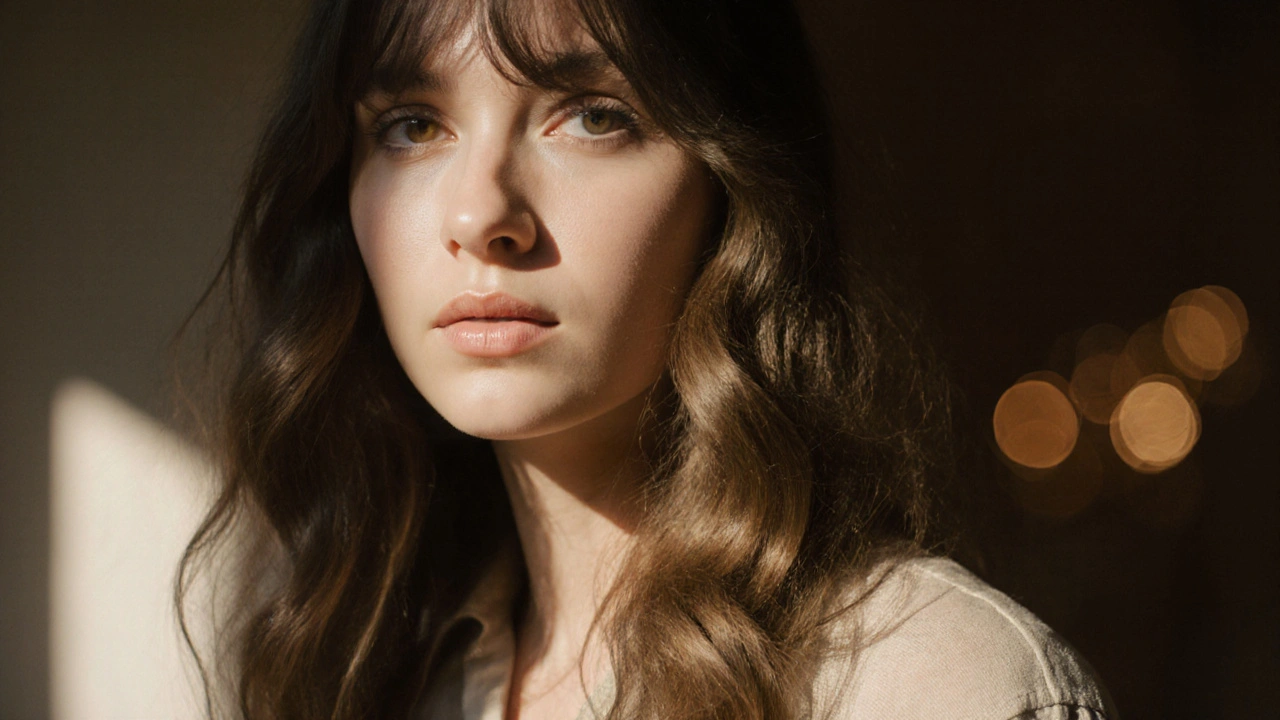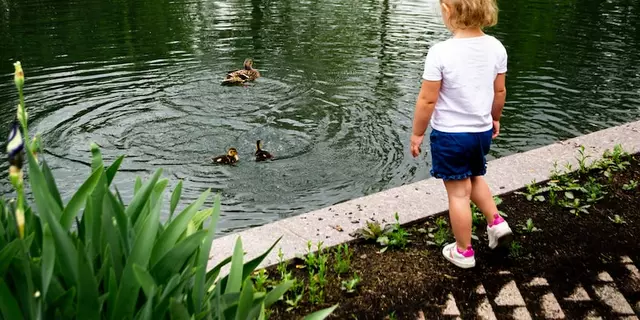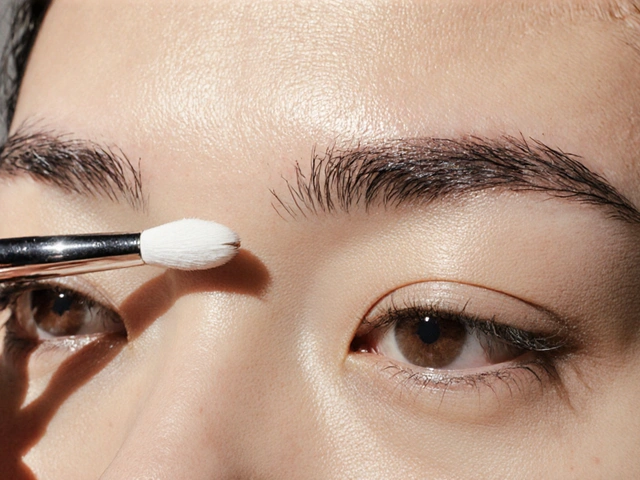Long hair doesn’t have to mean one style forever. If you’re tired of the same old look, a new haircut can refresh your whole vibe-without cutting it all off. The key isn’t just length, it’s shape, movement, and how the hair frames your face. Curtain bangs are having a serious moment right now, and for good reason. But they’re just one piece of the puzzle. Let’s break down the best haircuts for long hair that actually work in 2025, whether you’ve got straight, wavy, curly, or thick hair.
Curtain Bangs Are the Smartest Upgrade for Long Hair
Curtain bangs aren’t a trend-they’re a technique. Unlike blunt, heavy bangs that need constant trimming, curtain bangs start longer at the temples and gradually blend into the rest of your hair. They frame your face like a soft V, drawing attention to your eyes and cheekbones without covering them. The best part? They grow out gracefully. You don’t need a salon every four weeks. Just wash, blow-dry with a round brush, and let them fall naturally.
They work on almost every face shape. Round faces? Curtain bangs add vertical length. Square jaws? The softness balances the angles. Even if your hair is thin, curtain bangs create the illusion of volume at the crown. Salons are calling this the “low-maintenance lift.” And it’s true. You can go from flat, lifeless long hair to styled and intentional in under five minutes.
Layered Long Hair with Face-Framing Pieces
Layers are the secret weapon for long hair that looks heavy or shapeless. But not all layers are created equal. The goal isn’t to chop your hair into a mullet-it’s to add movement and reduce bulk where it matters. Ask your stylist for long layers that start below the chin and gradually get shorter toward the ends. These layers should be concentrated around your face, not your crown.
Why? Because hair grows out from the scalp, and if the weight is too low, it pulls everything down. Long layers take that weight off, letting your hair bounce. When paired with curtain bangs, you get a soft, flowing effect that looks expensive-even if you did it yourself at home with a good pair of scissors and a mirror.
Thick hair? Layers are non-negotiable. They prevent your hair from looking like a big, heavy blanket. Fine hair? Layers add dimension and make it look fuller. Wavy hair? Layers enhance your natural texture. It’s not magic-it’s physics.
Blunt Ends with a Slight Angle
Blunt cuts are back, but not the old-school, straight-across kind. The modern version has a slight angle, usually a soft diagonal that’s longer in the back and just a touch shorter in front. Think of it like a gentle slope from your nape to your chin. This shape gives long hair structure without making it look like a wig.
This cut works best with straight or slightly wavy hair. It highlights the natural shine and makes your hair look thicker. It’s also incredibly easy to style: wash, dry, and go. No curling iron needed. If you’re someone who hates spending time on hair, this is your holy grail.
Pro tip: Ask for your ends to be cut while your hair is dry. Wet hair stretches, and if your stylist trims it while it’s damp, you’ll end up with a shorter result than you expected. Always confirm the cut is done on dry hair for long styles.

Long Bob with Subtle Texturizing
A long bob (or “lob”) sits anywhere between your chin and collarbone. It’s not short enough to be a bob, but it’s long enough to still tie up in a ponytail. The trick? Add texture. Not choppy, not layered to death-just enough to break up the line and give it movement.
Texturizing means using thinning shears or point cutting to remove weight from the mid-lengths to ends. This prevents your lob from looking stiff or heavy. It also makes it easier to style with waves or curls. Even if you don’t curl it, the texture lets your hair fall in a more natural, lived-in way.
This cut is perfect for people who want to look polished but don’t want to commit to a full chop. It’s also a great transition if you’re thinking about going shorter later. Many women start with a lob and then slowly trim it down into a bob over a year.
Feathered Ends for Softness and Flow
Feathering isn’t just for the ’70s. Modern feathering is subtle-just enough to soften the ends and make them look like they’re floating. It’s not about layers; it’s about texture at the tips. Your stylist uses small, upward snips to create a wispy, airy finish.
This works best with fine or medium hair that tends to look flat. The feathering adds volume at the ends, so your hair doesn’t just hang straight down like a rope. It also helps if your ends are damaged or split-you can trim them without losing length.
Pair feathered ends with curtain bangs for a romantic, effortless look. It’s the kind of style that looks like you just rolled out of bed… but in a good way.

What to Avoid With Long Hair
Not every cut suits long hair. Here’s what to skip:
- Blunt, one-length cuts without any movement-they make hair look like a wig and weigh it down.
- Too many layers-if your hair is thick, too many layers can make it look like a haystack. Focus on face-framing only.
- Super short bangs-unless you’re ready for a weekly trim, avoid bangs that hit above the eyebrows. They grow out fast and can look uneven.
- Overly textured ends on curly hair-curly hair needs weight to hold its shape. Too much texturizing can make curls look frizzy and undefined.
Also, avoid getting a cut when your hair is wet unless you’re going for a very specific style. Wet hair can stretch up to 30% longer than dry hair. That means your stylist might cut it too short. Always ask if they’re cutting on dry hair.
How to Maintain These Haircuts
Long haircuts need upkeep, but not as much as you think. Here’s the simple routine:
- Get a trim every 10-12 weeks. Just enough to remove split ends and keep the shape.
- Use a sulfate-free shampoo. Long hair gets dry faster. Sulfates strip natural oils and make ends brittle.
- Apply a leave-in conditioner or hair oil to the mid-lengths and ends every other wash. Focus on the ends, not the scalp.
- Brush gently with a wide-tooth comb or boar bristle brush. Start from the bottom and work up to avoid tugging.
- Use heat tools sparingly. If you must, always use a heat protectant. Long hair takes longer to dry, so heat damage builds up faster.
And if you’re doing curtain bangs? Wash them every other day. Use a round brush to blow-dry them away from your face. A little texturizing spray adds grip and volume without stiffness.
Who Should Try What?
Here’s a quick guide to match your hair type and goals:
| Hair Type | Best Cut | Why It Works |
|---|---|---|
| Thick, straight | Blunt ends with slight angle | Reduces bulk, adds structure |
| Thick, wavy | Long layers + curtain bangs | Defines waves, lifts volume |
| Fine, straight | Feathered ends + curtain bangs | Adds movement, avoids flatness |
| Fine, curly | Long bob with minimal texturizing | Maintains curl definition, avoids frizz |
| Medium, curly | Long layers with face-framing | Reduces weight, enhances bounce |
Don’t feel locked into one style. Hair grows. Life changes. Your cut should evolve with you. A good long hair cut isn’t about perfection-it’s about ease, confidence, and looking like yourself, just better.
Are curtain bangs good for thin hair?
Yes, curtain bangs are one of the best bang styles for thin hair. They create the illusion of fullness because they’re longer and blend into the rest of your hair. Unlike blunt bangs that sit heavy on the forehead, curtain bangs are airy and layered, which helps them look more voluminous. Pair them with long layers to add body throughout your hair.
How often should I trim long hair?
Every 10 to 12 weeks is ideal. Trimming doesn’t make your hair grow faster, but it prevents split ends from traveling up the shaft. If you skip trims for more than four months, you could lose 1-2 inches of length to damage. A light trim keeps your style sharp without sacrificing length.
Can I get curtain bangs if I have a cowlick?
Absolutely. Cowlicks are actually easier to manage with curtain bangs than with blunt ones. Your stylist can cut them longer and angle them to follow the natural direction of your cowlick. Blow-drying them with a round brush in the opposite direction of the cowlick helps tame it. A little texturizing spray adds hold without stiffness.
Do long haircuts make you look older or younger?
It depends on the cut. Blunt, heavy styles can make you look older by emphasizing lines and sagging. Soft layers, face-framing pieces, and curtain bangs draw attention to your eyes and cheekbones, which are youthful features. A well-shaped long cut can actually make you look up to five years younger by lifting your facial structure.
Is it better to cut long hair in layers or keep it one length?
Layers are almost always better for long hair unless you have very fine, straight hair that’s naturally sleek. Layers remove weight, add movement, and make styling easier. One-length cuts work only if your hair is thin enough to hold its shape without looking heavy. Most people benefit from long, face-framing layers-even if they’re not visible from the front.
If you’re thinking about changing your long hair, start with curtain bangs. They’re the easiest way to transform your look without a huge commitment. Pair them with long layers, and you’ve got a style that grows with you-for months, not just weeks.







Antwan Holder
November 18, 2025 AT 17:28Look, I get it-hair is the crown, right? But what if your crown’s been on fire for years and you just haven’t noticed? Curtain bangs aren’t a haircut. They’re a cry for help wrapped in a TikTok filter. I’ve seen women cry in salons because their bangs grew out ‘wrong.’ You think you’re evolving? You’re just chasing the next Instagram aesthetic like a dog chasing its tail. Your hair doesn’t need a ‘vibe.’ It needs to stop being a prop for your identity crisis.
And don’t get me started on ‘low-maintenance lift.’ That’s not maintenance-that’s denial. You wash it, blow-dry it, spray it, and pray. That’s not freedom. That’s a daily ritual of self-deception. You’re not transforming. You’re just redecorating the cage.
Real change? Cut it all off. Burn the mirror. Start over. But no, we’d rather spend $300 on a cut that lasts six weeks and then blame our hormones when it looks like a confused squirrel nested in our scalp.
I’m not against hair. I’m against the performance of it.
Angelina Jefary
November 19, 2025 AT 23:49First off, ‘curtain bangs aren’t a trend-they’re a technique’? No. They’re a trend. Grammar alert: ‘they’re a technique’ is a run-on. Also, ‘they grow out gracefully’? Only if you’re a 24-year-old influencer with a $150 blowout and a Dyson Airwrap. Most of us have cowlicks, greasy roots, and zero time. And ‘blunt ends with a slight angle’? That’s just a lob with a fancy name. And why does every article say ‘ask your stylist’ like we all have access to a $200/hour hair wizard?
Also, ‘sulfate-free shampoo’-please. That’s just marketing. Sulfates aren’t evil. They’re just… efficient. You’re not ‘stripping natural oils’-you’re cleaning your hair. Stop falling for the ‘clean girl’ cult. Your hair isn’t a sacred temple. It’s keratin. Wash it. Move on.
Jennifer Kaiser
November 21, 2025 AT 06:05There’s something deeply human about how we tie our self-worth to our hair. We don’t just cut hair-we cut parts of ourselves loose. We try to outrun aging, trauma, stagnation, by changing the shape of our scalp. Curtain bangs? They’re not about aesthetics. They’re about permission. Permission to feel seen. To feel soft. To feel like you’re still becoming.
That’s why the ‘low-maintenance lift’ works. It’s not the cut. It’s the ritual. The blow-dry. The brush. The moment you look in the mirror and think, ‘I’m still here.’ That’s not vanity. That’s survival.
When I lost my mom, I didn’t cut my hair. I let it grow. For two years. It was the only thing I could control. When I finally got it layered, I cried. Not because it looked good. Because I felt like I could breathe again.
So yeah. Curtain bangs are a technique. But the technique isn’t in the scissors. It’s in the heart.
TIARA SUKMA UTAMA
November 23, 2025 AT 04:33Jasmine Oey
November 24, 2025 AT 07:09OMG. I’m literally crying. This article just saved my soul. I’ve been living in a beige void since 2022 and now I know-my hair was the problem. I went to my stylist yesterday and said, ‘Make me feel like a goddess who just stepped out of a Wes Anderson film.’ She nodded like she’d been waiting for me since the dawn of time.
Now I have long layers, feathered ends, and curtain bangs that whisper ‘I’m effortlessly elegant’ every time I walk into a coffee shop. I didn’t even need a filter. My ex texted me ‘you look… different.’ I didn’t reply. I just sipped my oat milk latte and let the silence speak.
Also, I stopped using sulfate shampoo. My hair now glows like it’s lit from within. I think I’m a new person. Maybe I’ll start journaling. Or adopt a cat. Or both.
Thank you, anonymous internet sage. You are my angel. My muse. My hair whisperer.
P.S. If you’re reading this and still have one-length hair… I’m sorry. But I’m also not sorry. You deserve better.
Marissa Martin
November 24, 2025 AT 17:12I don’t know why people get so worked up about haircuts. It’s just hair. You’re not going to die if your bangs grow out funny. I’ve had the same long straight cut for seven years. I wash it, tie it up, forget about it. My scalp is happy. My life is quiet. No one’s judging me. No one’s asking me to ‘evolve.’
Maybe the real problem isn’t your hair. Maybe it’s the noise. The pressure. The endless stream of ‘you should try this.’
I’m not saying don’t change. I’m saying: be quiet for a minute. Listen to yourself. Not the algorithm. Not the influencer. Not even the stylist.
Just… you.
James Winter
November 25, 2025 AT 04:46Aimee Quenneville
November 26, 2025 AT 16:22So… you’re telling me the secret to looking 5 years younger is… a haircut? And not, like, therapy? Or sleep? Or not crying into your cereal every morning?
Okay. I’ll try the curtain bangs. But only if you promise to also tell me how to stop my dog from stealing my socks. Because if my hair looks good but my life still looks like a Netflix sitcom, I’m going to scream.
Also, ‘blunt ends with a slight angle’? Sounds like a bad poetry line. I’m in.
P.S. My stylist says I have ‘structural integrity.’ I think that’s a compliment. Or a threat.
Cynthia Lamont
November 27, 2025 AT 11:08Let’s be real: every single one of these ‘best cuts’ is just a variation of ‘make it look like you didn’t try.’ But here’s the truth-nobody cares. Your hair doesn’t define you. Your trauma does. Your debt does. Your loneliness does.
And yet, here we are, spending hours researching ‘face-framing layers’ like it’s a life-or-death decision. Why? Because it’s easier than facing the fact that you’re stuck.
Also, ‘curtain bangs are low-maintenance’? Bro. I spent 45 minutes this morning trying to blow-dry them into something that didn’t look like a startled owl. My cat stared at me like I’d lost my mind.
And the ‘texturizing spray’? That’s just glue for your anxiety. You’re not styling your hair. You’re medicating it.
Stop buying into the lie. Your hair is not your salvation. It’s just… hair.
Kirk Doherty
November 28, 2025 AT 05:18Dmitriy Fedoseff
November 28, 2025 AT 13:01In my culture, hair is sacred. It carries memory. It is the thread between generations. We do not cut it lightly. We do not follow trends because they are ‘in’ on a screen.
But I understand-here, hair is a mirror. Not of the soul, but of the market. Of the algorithm. Of the fear of being unseen.
So yes. Curtain bangs. Layers. Feathered ends. Do them. Not because they are beautiful. But because you need to feel beautiful, even if just for a moment.
Just remember: when the trend fades, and the mirror cracks, and the salon closes-you will still be there.
And that? That is the only cut that matters.